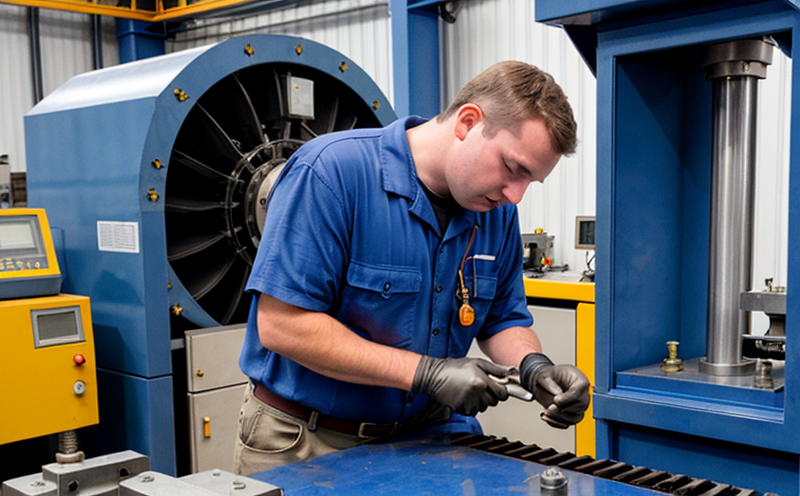High-cycle fatigue testing for metals
The Critical Importance of High-Cycle Fatigue Testing for Metals Why Businesses Cant Afford to Ignore It
In todays fast-paced industrial landscape, manufacturers and engineers are constantly pushing the boundaries of innovation and efficiency. The pursuit of lighter, stronger, and more durable materials has led to significant advancements in metal production. However, with these improvements comes an increased risk of material failure due to high-cycle fatigue.
High-cycle fatigue testing for metals is a laboratory service that simulates the cyclic loading conditions that real-world applications experience. Its an essential tool for businesses seeking to guarantee the reliability and lifespan of their products. In this article, well delve into the world of high-cycle fatigue testing and explore its numerous benefits, key advantages, and frequently asked questions.
What is High-Cycle Fatigue Testing?
High-cycle fatigue testing involves subjecting metal samples to a vast number of cycles under controlled conditions, often at elevated temperatures or in various environments. This process replicates the stresses that metals undergo during service, allowing engineers to predict their lifespan and identify potential failure points.
The test typically consists of three phases
Cyclic loading The sample is subjected to repeated loading and unloading cycles, which can be controlled in terms of amplitude, frequency, and mean stress.
Fatigue testing The sample is exposed to a large number of cycles until it fails or reaches the desired test duration.
Post-testing analysis The results are analyzed to determine the materials fatigue life, fracture behavior, and any signs of damage accumulation.
The Advantages of High-Cycle Fatigue Testing for Metals
By investing in high-cycle fatigue testing, businesses can enjoy numerous benefits that enhance product reliability, reduce costs, and improve overall competitiveness. Here are some key advantages
Predictive maintenance Identify potential failure points before they occur, reducing downtime and minimizing the risk of catastrophic failures.
Material selection Choose the most suitable material for a specific application based on its fatigue properties, ensuring optimal performance and lifespan.
Design optimization Refine product designs to minimize stress concentrations, reduce weight, and enhance overall efficiency.
Quality assurance Ensure compliance with industry standards and regulations by demonstrating your products ability to withstand cyclic loading conditions.
Cost savings Avoid costly rework, repairs, or replacements by identifying material weaknesses early in the development process.
Benefits of High-Cycle Fatigue Testing
Improved product reliability
Enhanced lifespan and durability
Increased efficiency and reduced costs
Compliance with industry standards and regulations
Optimized design and material selection
Reduced risk of catastrophic failures
QA Common Questions about High-Cycle Fatigue Testing for Metals
What types of metals can be tested?
High-cycle fatigue testing is suitable for a wide range of metals, including steel, aluminum, titanium, copper, and other alloys.
How do I choose the right test parameters?
Consult with our experienced engineers to determine the most relevant test conditions based on your products specific application and requirements.
What are the limitations of high-cycle fatigue testing?
High-cycle fatigue testing is not a replacement for traditional material characterization techniques, such as tensile or compressive testing. However, it provides valuable information on material behavior under cyclic loading conditions.
Can high-cycle fatigue testing be performed at elevated temperatures?
Yes, our state-of-the-art facilities enable temperature-controlled testing to simulate real-world applications and provide more accurate results.
How long does the test process typically take?
The duration of a high-cycle fatigue test varies depending on the material and test conditions. However, typical tests can range from several hours to several weeks or even months.
What are the benefits of testing in different environments (e.g., salt fog, corrosion)?
Testing in various environments allows you to assess your products performance under realistic conditions, ensuring that it meets the expected standards and specifications.
Can I request customized test protocols?
Yes, our team will work with you to develop a tailored test plan that meets your specific requirements and ensures the accuracy of the results.
Conclusion
High-cycle fatigue testing for metals is an indispensable tool in todays industrial landscape. By investing in this laboratory service, businesses can guarantee the reliability and lifespan of their products, reduce costs, and enhance overall competitiveness. At Eurolab, our team of experts is committed to providing top-notch high-cycle fatigue testing services that meet the highest industry standards.
Dont risk material failure or catastrophic accidents. Choose Eurolab for your high-cycle fatigue testing needs and take the first step towards creating more reliable, efficient, and durable products.




